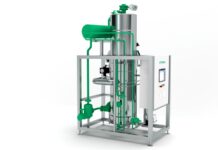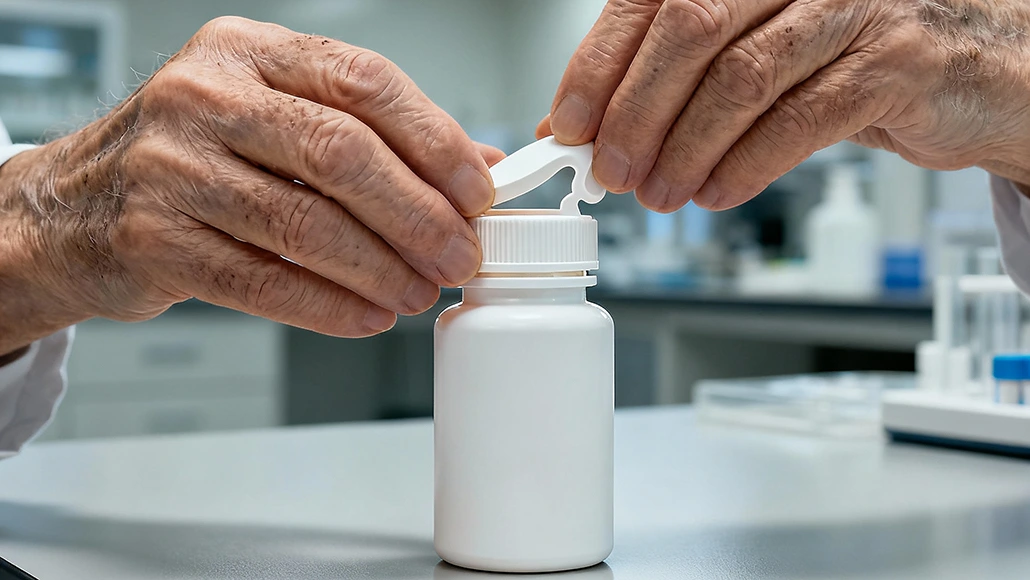Innovative Child-Resistant Packaging Designs for Pharmaceuticals
The pharmaceutical industry continues to evolve in its approach to medication safety, with child-resistant packaging in pharmaceuticals emerging as a critical focus area that balances protection with accessibility. Recent innovations in this field demonstrate how manufacturers are addressing the complex challenge of creating packaging that prevents accidental ingestion by children while remaining usable for adult patients, including elderly individuals who may have reduced dexterity or strength.
The Growing Imperative for Enhanced Safety Solutions
The global child-resistant bottles market reached USD 3.2 billion in 2025 and is projected to grow to USD 5.0 billion by 2035, reflecting the increasing recognition of safety packaging’s importance in preventing pharmaceutical accidents. This growth trajectory underscores the industry’s commitment to developing more sophisticated child-resistant packaging solutions that meet evolving regulatory requirements and consumer expectations.
Pharmaceutical packaging safety regulations have become increasingly stringent worldwide, with the U.S. Poison Prevention Packaging Act and similar frameworks in Europe and Asia mandating comprehensive safety features for prescription drugs, over-the-counter medications, and pediatric formulations. These regulatory developments have created a dynamic environment where innovation thrives, pushing manufacturers to develop packaging solutions that exceed basic compliance requirements.
The pharmaceutical segment contributes approximately 47.8% of the child-resistant bottles market share, driven by regulatory mandates and the industry’s reliance on safe primary packaging. This dominance reflects the critical role that packaging plays in preventing accidental poisoning incidents, particularly among children who remain naturally curious about their environment but lack the cognitive ability to understand medication dangers.
Advanced Design Mechanisms Transforming User Experience
Contemporary child-resistant packaging innovations have moved beyond traditional push-and-turn mechanisms to incorporate more sophisticated design elements that enhance both safety and accessibility. Modern push-and-turn caps now feature fine-tuned torque requirements that maintain child-resistance while reducing the physical effort needed for adult operation, addressing longstanding complaints about packaging difficulty.
Squeeze-and-turn mechanisms have evolved to include larger diameter caps with enhanced ribbed edges that improve grip and tactility. These improvements particularly benefit elderly patients who may struggle with traditional small caps, demonstrating how pharmaceutical packaging design increasingly considers the full spectrum of user needs. The integration of ergonomic principles into child-resistant design represents a significant advancement in making medications more accessible without compromising safety.
Blister pack innovations have introduced peel-and-push designs that require multiple coordinated actions to access medication. These systems typically involve peeling back a protective layer before pushing tablets through the foil backing, creating an additional barrier that deters children while remaining manageable for adults. The sequential nature of these actions makes accidental access significantly more difficult for young children while maintaining reasonable accessibility for intended users.
Smart Technology Integration and Future Innovations
The integration of smart technology into child-resistant packaging represents the next frontier in pharmaceutical safety innovation. Biometric authentication systems are beginning to appear in high-security applications, utilizing fingerprint recognition to ensure only authorized users can access medications. While currently limited by cost considerations, these systems offer unprecedented security for controlled substances and high-risk medications.
Near Field Communication technology has emerged as a practical smart packaging solution that enhances traditional child-resistant features. NFC-enabled packaging can provide digital verification of user authorization while maintaining physical safety barriers. These systems can also deliver educational content, dosage reminders, and safety information directly to smartphones, creating a comprehensive medication management ecosystem.
Sensor-based packaging technologies are under development that can detect unauthorized access attempts and send notifications to caregivers or healthcare providers. These innovations are particularly valuable in household settings where multiple generations may have access to medications, providing real-time monitoring capabilities that extend beyond physical barriers.
Senior-Friendly Design Principles and Inclusive Accessibility
The development of senior-friendly packaging has become increasingly important as global populations age and medication use among elderly patients continues to rise. Senior-friendly design principles focus on reducing the physical effort required to open packaging while maintaining child-resistant properties, addressing the reality that many elderly patients struggle with traditional safety mechanisms.
Testing protocols now incorporate senior accessibility requirements, ensuring that packaging designs pass both child-resistance tests and adult accessibility evaluations. These protocols typically require that at least 90% of older adults can successfully open packaging within five minutes, demonstrating the industry’s commitment to inclusive design that doesn’t sacrifice safety for accessibility.
Ergonomic improvements in child-resistant packaging include enhanced visual contrast for labeling, larger grip areas for better handling, and reduced force requirements for opening mechanisms. These modifications benefit not only elderly users but also individuals with arthritis, reduced hand strength, or other physical limitations that affect packaging interaction.
Material Science Advances and Sustainable Solutions
Environmental consciousness is driving innovation in child-resistant packaging materials, with manufacturers increasingly adopting recyclable and biodegradable options that maintain safety performance. High-Density Polyethylene and Polyethylene Terephthalate formulations now incorporate post-consumer recycled content while preserving the structural integrity necessary for child-resistant mechanisms.
Material innovations include the development of mono-material packaging solutions that simplify recycling processes while maintaining complex safety features. These advances demonstrate that environmental responsibility and pharmaceutical safety can coexist, addressing growing consumer and regulatory pressure for sustainable packaging options.
Advanced polymer science has enabled the creation of packaging materials with enhanced barrier properties that protect medications while incorporating sophisticated opening mechanisms. These materials maintain stability across various environmental conditions while supporting the precise tolerances required for effective child-resistant features.
Regulatory Landscape and Compliance Evolution
The regulatory environment surrounding child-resistant packaging continues to evolve, with authorities worldwide implementing more comprehensive requirements that address both safety and accessibility concerns. The European Medicines Agency and FDA have introduced guidelines that emphasize the importance of user testing across diverse populations, ensuring that packaging solutions work effectively for all intended users.
Regulatory harmonization efforts are creating more consistent standards across global markets, enabling manufacturers to develop packaging solutions that meet multiple jurisdictional requirements simultaneously. This harmonization reduces development costs while ensuring that safety standards remain high regardless of geographic distribution.
Compliance requirements now extend beyond basic child-resistance to include comprehensive documentation of user testing, long-term stability studies, and environmental impact assessments. These expanded requirements reflect the growing recognition that pharmaceutical packaging plays a multifaceted role in medication safety and public health protection.
Manufacturing Excellence and Quality Assurance
Modern manufacturing processes for child-resistant packaging incorporate advanced quality control systems that ensure consistent performance across large production volumes. Automated inspection systems utilize computer vision and artificial intelligence to verify that each package meets precise specifications for child-resistance and adult accessibility.
Quality assurance protocols have evolved to include real-time monitoring of manufacturing parameters that affect packaging performance. These systems can detect variations in closure torque, material thickness, or component alignment that might compromise safety or accessibility, enabling immediate corrective action.
Statistical process control methods now provide comprehensive tracking of packaging performance metrics throughout the manufacturing lifecycle. This data-driven approach enables continuous improvement in packaging design and manufacturing processes while maintaining strict compliance with safety requirements.
Market Dynamics and Future Growth Projections
The child-resistant pharmaceutical packaging market is experiencing robust growth driven by increasing healthcare awareness, expanding pharmaceutical production, and evolving regulatory requirements. Market analysis indicates compound annual growth rates exceeding 4.5% across major global markets, with particular strength in regions experiencing demographic transitions toward older populations.
Innovation in child-resistant packaging is being driven by the growing demand for liquid pharmaceuticals, particularly in pediatric and geriatric care segments. Liquid formulations present unique packaging challenges that require specialized child-resistant solutions while maintaining ease of administration for intended users.
The competitive landscape continues to evolve as packaging manufacturers invest in research and development capabilities that enable more sophisticated safety solutions. These investments are creating opportunities for breakthrough innovations that could fundamentally change how the industry approaches child-resistant packaging challenges.
Conclusion: Balancing Innovation with Practical Implementation
The future of child-resistant packaging in pharmaceuticals lies in continued innovation that addresses the complex interplay between safety, accessibility, and user experience. Successful packaging solutions must not only prevent accidental access by children but also support medication adherence among adult patients who may face physical or cognitive challenges in managing their treatments.
As the pharmaceutical industry continues to evolve toward more personalized and complex therapies, packaging innovations must keep pace with changing medication delivery requirements while maintaining the fundamental safety principles that protect vulnerable populations. The integration of smart technologies, sustainable materials, and inclusive design principles represents the path forward for creating packaging solutions that truly serve all stakeholders in the healthcare ecosystem.
The ongoing collaboration between pharmaceutical manufacturers, packaging suppliers, regulatory authorities, and healthcare providers will continue to drive innovations that enhance medication safety while supporting optimal patient outcomes. Through this collaborative approach, the industry can ensure that child-resistant packaging evolves to meet future challenges while maintaining its essential protective function in safeguarding public health.



















